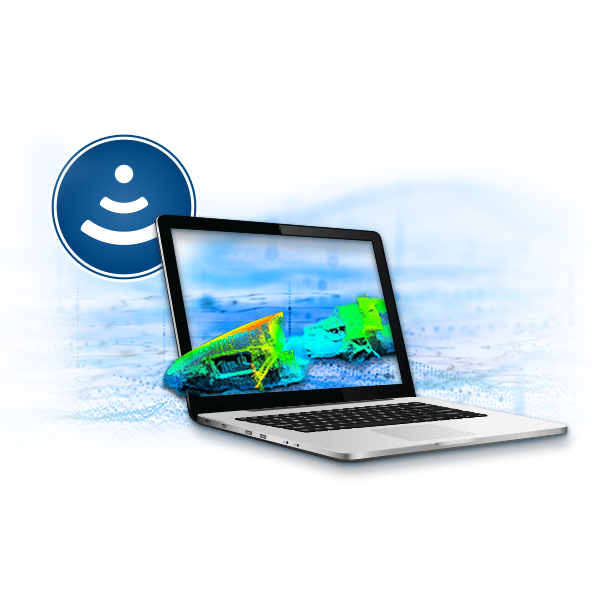HIPS & SIPS
Professional Tools on Demand
CARIS is the trusted production powerhouse of the world leaders in Hydrographic survey. Built on a foundation of automation and flexibility it has never been easier to deploy HIPS and SIPS to underpin any unique workflow.
HIPS and SIPS provides a complete toolkit for extracting the most value and quality from hydrographic surveys by leveraging tools for georeferencing and correcting point cloud, quality analysis, data cleaning, sensor fusion, and creating additional products from backscatter and water column data.
Part of the Ping-to-Chart solution
Buy Now
Contact Sales

Software Suite Options
Which Package Fits Your Needs? Teledyne CARIS knows that accuracy and efficiency are all-important in your business, which is why the HIPS and SIPS solution integrates the processing of Sonar and lidar bathymetry, water column and seafloor imagery in a single application.
| SIPS Essential As low as |
HIPS Essential As low as |
HIPS & SIPS Essential As low as |
HIPS Professional As low as |
HIPS & SIPS Professional As low as |
||
| Single Beam Bathymetry | Sensor data |
|||||
| Multibeam Bathymetry | ||||||
| Side Scan Imagery | ||||||
| Multibeam Imagery | ||||||
| Water Column Imagery (WCI)/Multiple Detections | ||||||
| Airborne Lidar Bathymetry | ||||||
| Laser Scanner | ||||||
| Multi-user Processing | Features |
|||||
| Calibration | ||||||
| Delayed Heave | ||||||
| Post-processed Auxiliary Data | ||||||
| Total Propagated Uncertainty (TPU) and CUBE | ||||||
| IHO QC Tools | ||||||
| Variable Resolution (VR) Surfaces | ||||||
| Contouring and Soundings | ||||||
| Additional GIS Tools |
New Features in version 12.1
Released FEB 05, 2025
Teledyne CARIS is pleased to announce the release of CARIS HIPS and SIPS 12.1.0. This release introduces several improvements which make the Subset Corrections functionality more versatile and faster, including additional settings for correction processing, and the introduction of a new Automatic-Corrections feature.
*Note - An updated license file will be required to use New Automatic-Corrections functionality in HIPS and SIPS 12.1.0. Please reach out to Customer Support for updated license file.
Corrections (in Subset Editor Correction Panel)
The Subset Corrections functionality has been updated with tabs that allow users to add corrections using either the existing manual method or a new automatic method.
Manual Corrections
The existing Subset Corrections functionality has been added to a new 'Manual (2D Slice)' tab in the Corrections node. The functionality has been updated to allow users to not only add new corrections, but to allow them to manually edit/delete existing corrections within the subset area under each track line.
New Automatic-Corrections
The new automatic method is accessible from a new 'Automatic (Subset/View)' tab in the Corrections node. Several new settings for automatic correction processing are available, enabling users to correct for Depth, Sound Velocity, or both, along with other settings. An iterative solution is applied to the subset or main track line view, which can be initiated using a Run button and stopped at any point during processing. The results can be previewed in the 2D/3D Subset Views to observe corrections as they progress through iterations. This new automatic corrections feature significantly reduces the time required compared to manual corrections. The features of the Automatic-Corrections are as follows:
-
Automatic Sound Velocity/Depth Corrections: Automate the correction process for inaccurate sound velocity and depth differences, drastically reducing manual effort.
-
Iterative Approach: Start, stop, continue, and restart automatic corrections in any desired area, providing flexibility and control.
-
Real-Time Preview: Preview each line affected by a new profile correction as the process runs, ensuring accuracy and confidence in corrections.
-
Automatic Outlier Detection: Enable automatic outlier detection to help reduce noise for processing corrections, giving more accurate correction results.
-
Subset Editor Speed Utilization: The new Subset Editor speed improvements (see "Subset Editor Speed Improvement" section below for more details) are leveraged during the corrections process, with frequent querying and subset loading occurring seamlessly.
Note: An updated license file will be required to use New Automatic-Corrections functionality in HIPS and SIPS 12.1.0. Please reach out to Customer Support for updated license file.
Subset Editor Speed Improvement
The following performance improvements have been made to the subset editor, which allows users to view and clean processed depth profiles:
-
Faster Querying: Experience significantly reduced wait times when querying data, enhancing overall productivity.
-
Rapid Subsequent Subset Loading: The current subset's memory is freed up much more quickly, allowing users to load the next subset rapidly and continue their workflow with minimal interruption.
-
Enhanced Graphical Rendering: Enjoy quicker and more responsive graphical updates, making data visualization more efficient.
-
Partial Surface Update Delay: A new feature that allows user to delay partial surface updates (Automatic Surface Update must be on in Tools > Options and Keep Up to Date surface property must be set), optimizing performance during intensive tasks.
To view a full list of enhancements available visit the HIPS and SIPS What's New page.
Complementary Products
CARIS Onboard
CARIS Onboard enables flexible and automated processing on the survey platform providing confidence of complete data acquisition before leaving the site.
Learn moreCARIS Collect
Simple and effective Hydrographic Data Collection. CARIS Collect provides an easy to learn package without sacrifice.
Learn moreTechnical Specifications
| HIPS and SIPS | |
|---|---|
| Component | Recommended |
| Processor | Recent generation multi-core CPU |
| Memory | 16 GB of RAM |
| Storage | 7200 RPM disk drive or solid-state drive, minimum 1 GB available for installation |
| Display | NVidia or AMD display adapter, with an OpenGL 3.3 compatible GPU, with 2GB of memory or greater |
| Operating System | Windows 10 Professional 64-bit, or Windows 11 Professional 64-bit |
Videos
Downloads
Datasheets
| Document | Type |
|---|---|
| HIPS and SIPS Datasheet |
Suggested Reading

